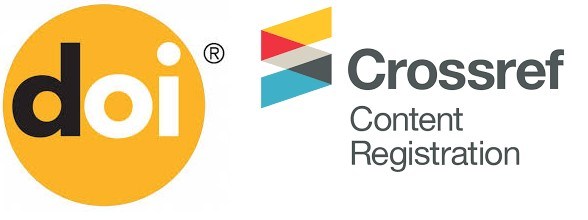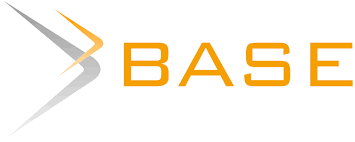EFEKTIVITAS MEDIA SCRATCHJR TERHADAP HIGHER ORDER THINKING SKILLS ANAK USIA DINI
Abstract
Tujuan dari penelitian ini adalah untuk mengetahui efektivitas ScratchJr terhadap higher order thinking skills anak usia dini pada keluarga yang bekerja sebagai pegawai swasta. Subjek yang dilibatkan pada penelitian ini adalah anak usia 5-6 tahun (N=9) yang memiliki orang tua yang bekerja sebagai pegawai swasta. Pengukuran efektivitas pada penelitian ini dilakukan sebanyak dua kali kepada anak sebelum dan sesudah dilaksanakan pelatihan, sedangkan pelatihan diberikan kepada guru dalam satu sesi dan anak dalam enam sesi. Hasil analisis data dengan uji paired sample t-test menunjukkan bahwa ada perbedaan yang signifikan antara sebelum dan sesudah penelitian atau dapat dikatakan bahwa ScratchJr mampu memberikan pengaruh berupa peningkatan higher order thinking skills anak usia 5-6 tahun pada keluarga yang bekerja sebagai pegawai swasta. Sehingga dapat bahwa adanya efektivitas ScratchJr terhadap higher order thinking skills anak usia 5-6 tahun pada keluarga yang bekerja sebagai pegawai swasta. Efektivitas aplikasi ini ditunjukkan dengan adanya peningkatan higher order thinking skills pada domain menganalisis (C4) dengan indikator membedakan, mengorganisir, dan menghubungkan. Domain mengevaluasi (C5) dengan indikator memeriksa dan menilai, serta pada domain menciptakan (C6) dengan indikator menghasilkan, merencanakan, dan memproduksi.
Keywords
Full Text:
PDFReferences
(AECT). (2019). Educational media and yearbook. Aect.Org.
Anderson, L. W., & Krathwohl, D. R. (2001). A taxonomy for learning, teaching, and assessing: a revision of bloom’s taxonomy. Addison Wesley Longman, Inc.
Bakken, L., Brown, N., & Downing, B. (2017). Early childhood education: the long-term benefits. Journal of Research in Childhood Education, 31(2), 255–269. https://doi.org/10.1080/02568543.2016.1273285
Bers, M. U. (2018). Coding, playgrounds and literacy in early childhood education: The development of kibo robotics and scratchjr. IEEE Global Engineering Education Conference, EDUCON, 2018-April, 2094–2102. https://doi.org/10.1109/EDUCON.2018.8363498
Bers, M. U., & Resnick, M. (2016). The official scratchjr book (Vol. 4, Issue 1).
Brame, C. J. (2019). Spotlight 1. writing learning objectives using bloom’s taxonomy. In Science Teaching Essentials Short Guides to Good Practice (pp. 29–34). Mica Haley. https://doi.org/10.1016/B978-0-12-814702-3.00025-1
Chotimah, L. N., Ani, H. M., & Widodo, J. (2017). Pengaruh status sosial ekonomi orang tua terhadap prestasi belajar siswa (studi kasus siswa kelas VIII SMP Negeri 1 Jember tahun ajaran 2016/2017). JURNAL PENDIDIKAN EKONOMI: Jurnal Ilmiah Ilmu Pendidikan, Ilmu Ekonomi Dan Ilmu Sosial, 11(1), 75. https://doi.org/10.19184/jpe.v11i1.5004
Dini, D. P. P. A. U. (2015). Kurikulum pendidikan anak usia dini. Kemendikbud.
Flannery, L. P., Kazakoff, E. R., Bontá, P., Silverman, B., Bers, M. U., & Resnick, M. (2013). Designing scratchjr: support for early childhood learning through computer programming. ACM International Conference Proceeding Series, 1–10. https://doi.org/10.1145/2485760.2485785
Frausel, R. R., Silvey, C., Freeman, C., Dowling, N., Richland, L. E., Levine, S. C., Raudenbush, S., & Goldin-Meadow, S. (2020). The origins of higher-order thinking lie in children’s spontaneous talk across the pre-school years. Cognition, 200(August 2019), 104274. https://doi.org/10.1016/j.cognition.2020.104274
H.A.W. Widjaja. (1996). Administrasi kepegawaian: suatu pengantar. In Raja grafindo persada. Raja grafindo persada. https://lib.ui.ac.id/detail?id=7032&lokasi=lokal
Heider, K. L., & Jalongo, M. R. (2015). Young children and families in the information age: applications of technology in early childhood. Young Children and Families in the Information Age: Applications of Technology in Early Childhood, 1–292. https://doi.org/10.1007/978-94-017-9184-7
Hobri, Septiawati, I., & Prihandoko, A. C. (2018). High-order thinking skill in contextual teaching and learning of mathematics based on lesson study for learning community. International Journal of Engineering and Technology(UAE), 7(3), 1576–1580. https://doi.org/10.14419/ijet.v7i3.12110
Kageyama, Y., Zamudio, S. Z., & Barton, M. (2022). Incorporation of simulation features to improve higher order thinking skills. International Journal of Management Education, 20(2), 100628. https://doi.org/10.1016/j.ijme.2022.100628
Kwangmuang, P., Jarutkamolpong, S., Sangboonraung, W., & Daungtod, S. (2021). The development of learning innovation to enhance higher order thinking skills for students in Thailand junior high schools. Heliyon, 7(6), e07309. https://doi.org/10.1016/j.heliyon.2021.e07309
Macrides, E., Miliou, O., & Angeli, C. (2022). Programming in early childhood education: A systematic review. International Journal of Child-Computer Interaction, 32, 100396. https://doi.org/10.1016/j.ijcci.2021.100396
Marshall, J. C., & Horton, R. M. (2011). The relationship of teacher-facilitated, inquiry-based instruction to student higher-order thinking. School Science and Mathematics, 111(3), 93–101. https://doi.org/10.1111/j.1949-8594.2010.00066.x
Keputusan Mendikbud Ristek No.56 tentang Pedoman Penerapan Kurikulum. (2022).
Nguyễn, T. M. T., & Nguyễn, T. T. L. (2017). Influence of explicit higher-order thinking skills instruction on students’ learning of linguistics. Thinking Skills and Creativity, 26, 113–127. https://doi.org/10.1016/j.tsc.2017.10.004
Nurjanah, N. E., Hafidah, R., Syamsuddin, M. M., Pudyaningtyas, A. R., Dewi, N. K., & Sholeha, V. (2021). Dampak aplikasi scratchjr terhadap ketrampilan problem-solving anak usia dini. Jurnal Obsesi : Jurnal Pendidikan Anak Usia Dini, 6(3), 2030–2042. https://doi.org/10.31004/obsesi.v6i3.1531
Oliemat, E., Ihmeideh, F., & Alkhawaldeh, M. (2018). The use of touch-screen tablets in early childhood: children’s knowledge, skills, and attitudes towards tablet technology. Children and Youth Services Review, 88(March), 591–597. https://doi.org/10.1016/j.childyouth.2018.03.028
Papadakis, S., Kalogiannakis, M., & Zaranis, N. (2016). Developing fundamental programming concepts and computational thinking with scratchjr in preschool education: a case study. International Journal of Mobile Learning and Organisation, 10(3), 187–202. https://doi.org/10.1504/IJMLO.2016.077867
Papadakis, S., Kalogiannakis, M., & Zaranis, N. (2018). Educational apps from the android google play for greek preschoolers: a systematic review. Computers and Education, 116, 139–160. https://doi.org/10.1016/j.compedu.2017.09.007
Pediatrics, A. A. of, & WHO. (2020). Screen time guidelines by age. In Screen Time Guidelines by Age (pp. 24–25).
Pila, S., Aladé, F., Sheehan, K. J., Lauricella, A. R., & Wartella, E. A. (2019). Learning to code via tablet applications: an evaluation of daisy the dinosaur and kodable as learning tools for young children. Computers and Education, 128(September 2018), 52–62. https://doi.org/10.1016/j.compedu.2018.09.006
Peraturan Menteri Pendidikan Nasional Republik Indonesia No. 24, (2006). Kementerian Pendidikan dan Kebudayaan, D. P. P. A. U. D. (2015). Penyusunan Rencana Pelaksanaan Pembelajaran Pendidikan Anak Usia Dini. Direktorat Pembinaan Anak Usai Dini.
Portelance, D. J., Strawhacker, A. L., & Bers, M. U. (2016). Constructing the scratchjr programming language in the early childhood classroom. International Journal of Technology and Design Education, 26(4), 489–504. https://doi.org/10.1007/s10798-015-9325-0
Pratiwi, H. (2020). Screen time dalam perilaku pengasuhan gererasi alpha pada masa tanggap darurat covid-19. Jurnal Obsesi : Jurnal Pendidikan Anak Usia Dini, 5(1), 265. https://doi.org/10.31004/obsesi.v5i1.544
Ricker, A. A., & Richert, R. A. (2021). Digital gaming and metacognition in middle childhood. Computers in Human Behavior, 115(October 2020), 106593. https://doi.org/10.1016/j.chb.2020.106593
Santoso, S. (2010). Kupas tuntas eksperimen dengan excel 2007 dan minitab 15. In PT Elex Media Konputindo.
Sheehan, K. J., Pila, S., Lauricella, A. R., & Wartella, E. A. (2019). Computers & education parent-child interaction and children ’ s learning from a coding application. Computers & Education, 140(June), 103601. https://doi.org/10.1016/j.compedu.2019.103601
Steffen, S. (2018). hots skill developing higher order thinking in young learnings. In Angewandte Chemie International Edition, 6(11), 951–952. (1st ed.). Redleaf Press.
Strawhacker, A., Lee, M., Bers, M., & Caine, C. (2015). ScratchJr demo: a coding language for kindergarten. Proceedings of IDC 2015: The 14th International Conference on Interaction Design and Children, 414–417. https://doi.org/10.1145/2771839.2771867
WHO. (2020). Who guidelines on physical activity and sedentary behaviour.
Xu, T., & Zhang, B. (2021). Improving thinking skills in early childhood using effective teaching strategies. Aggression and Violent Behavior, July, 101704. https://doi.org/10.1016/j.avb.2021.101704
Yalçın, V., & Erden, Ş. (2021). The effect of stem activities prepared according to the design thinking model on preschool children’s creativity and problem-solving skills. Thinking Skills and Creativity, 41(February). https://doi.org/10.1016/j.tsc.2021.100864
Yu, J., & Roque, R. (2019). A review of computational toys and kits for young children. International Journal of Child-Computer Interaction, 21, 17–36. https://doi.org/10.1016/j.ijcci.2019.04.001
Yuhelson, A. R. (2020). Media pembelajaran transformatif. In ideas publishing. ideas publising
Refbacks
- There are currently no refbacks.

1.png)









